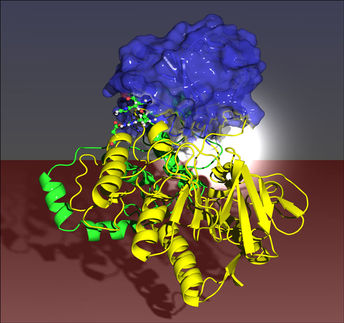A way to determine the toxicity of nanomaterials
Official website of the Russian Science Foundation reports that a group of scientists from Siberian Federal University and Krasnoyarsk Scientific Center of the SB RAS has developed a bioluminescent enzymatic test system for assessing the toxicity of carbon nanomaterials.
Its distinctive features are simplicity, fast reaction speed and high sensitivity.
The scientists proposed using the bioluminescent reagent "Enzymolum" to test the toxicity of nanomaterials. "Enzymolum" is a unique enzymatic system of several molecules isolated from marine luminous bacteria. The intensity of the luminescence of the reagent varies under the action of various additives. Scientists have tested the ability of commercial nanomaterials, such as various carbon nanotubes and fullerenes, to suppress the luminescence of the enzymatic system. The greatest inhibitory effect was observed for multiwalled nanotubes. It should be noted that such an action was fixed at concentrations of nanomaterials exceeding those expected in the environment. However, with the increase in their application, we can expect an increase in the concentrations occurring in nature.
According to Elena Esimbekova, an Associate Professor of the Department of Biophysics at the School of Fundamental Biology and Biotechnology of SibFU, a researcher at the Institute of Biophysics of the Krasnoyarsk Scientific Center of the SB RAS, the development of nanotechnology has led to the widespread use of nanomaterials in various fields of industry. At present, artificially created nanoparticles, primarily on the basis of carbon, are actively used in the production of medicines, cosmetics and in the food industry: "We have been developing the 'Enzymolum' test systems over the past ten years. Today it is an easy-to-use technology. Reagent is a small dried disk with enzymes included in them. Each of the disks is designed to carry out one measurement. Disks can be stored for a long time without loss of properties. The analysis itself takes 2 or 3 minutes. After that, you have a result -- whether the solution of the studied sample affects the glow of the biological material. Based on this it can be concluded wether there is potential toxicity. The test system has already been tested for the ability to quickly determine the presence in the environment of such toxicants as heavy metals or pesticides. We predict that the molecular express-biotest 'Enzymolum' will be widely used in different spheres."
Original publication
Elena N. Esimbekova and Elena V. Nemtseva and Anna E. Bezrukikh and Galina V. Jukova and Albert E. Lisitsa and Viktoriya I. Lonshakova-Mukina and Nadezhda V. Rimatskaya and Oleg S. Sutormin and Valentina A. Kratasyuk; "Bioluminescent enzyme inhibition-based assay to predict the potential toxicity of carbon nanomaterials"; Toxicology in Vitro; 2017
Original publication
Elena N. Esimbekova and Elena V. Nemtseva and Anna E. Bezrukikh and Galina V. Jukova and Albert E. Lisitsa and Viktoriya I. Lonshakova-Mukina and Nadezhda V. Rimatskaya and Oleg S. Sutormin and Valentina A. Kratasyuk; "Bioluminescent enzyme inhibition-based assay to predict the potential toxicity of carbon nanomaterials"; Toxicology in Vitro; 2017
Topics
Organizations
Other news from the department science
These products might interest you

NANOPHOX CS by Sympatec
Particle size analysis in the nano range: Analyzing high concentrations with ease
Reliable results without time-consuming sample preparation

Eclipse by Wyatt Technology
FFF-MALS system for separation and characterization of macromolecules and nanoparticles
The latest and most innovative FFF system designed for highest usability, robustness and data quality

DynaPro Plate Reader III by Wyatt Technology
Screening of biopharmaceuticals and proteins with high-throughput dynamic light scattering (DLS)
Efficiently characterize your sample quality and stability from lead discovery to quality control

Get the chemical industry in your inbox
By submitting this form you agree that LUMITOS AG will send you the newsletter(s) selected above by email. Your data will not be passed on to third parties. Your data will be stored and processed in accordance with our data protection regulations. LUMITOS may contact you by email for the purpose of advertising or market and opinion surveys. You can revoke your consent at any time without giving reasons to LUMITOS AG, Ernst-Augustin-Str. 2, 12489 Berlin, Germany or by e-mail at revoke@lumitos.com with effect for the future. In addition, each email contains a link to unsubscribe from the corresponding newsletter.

























































